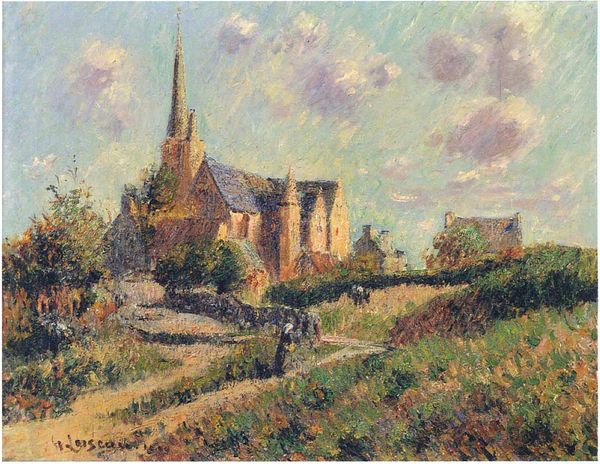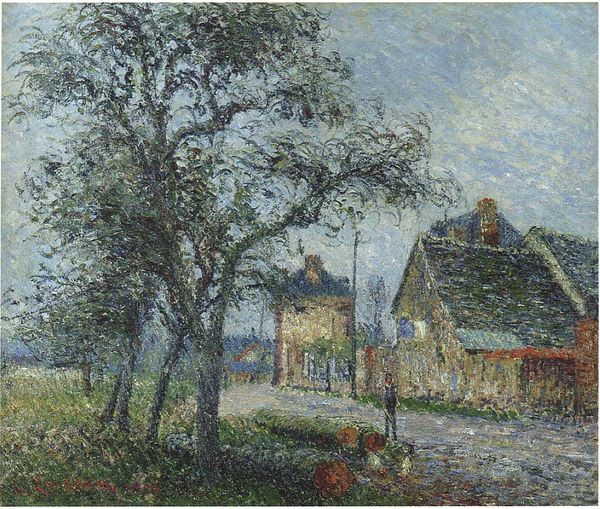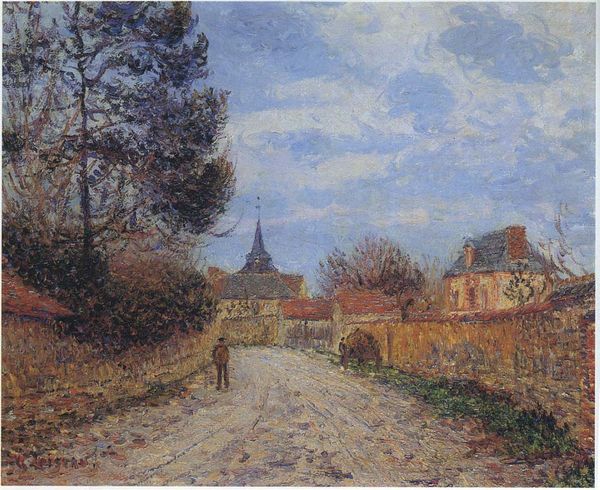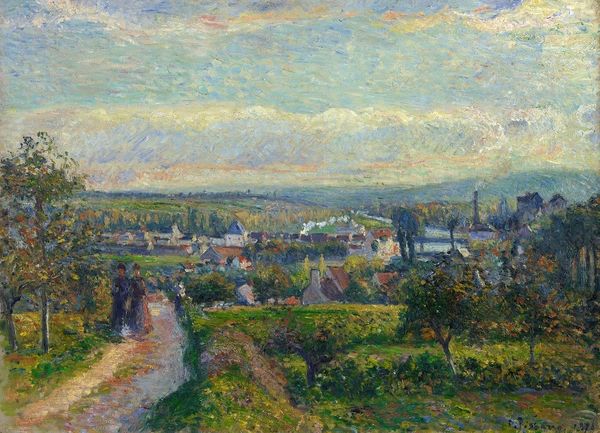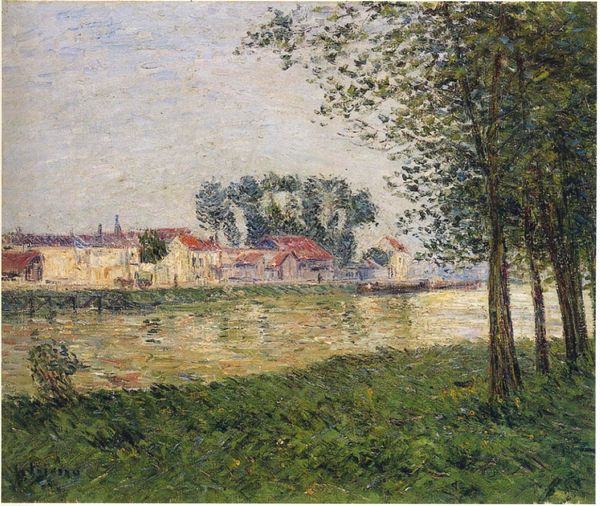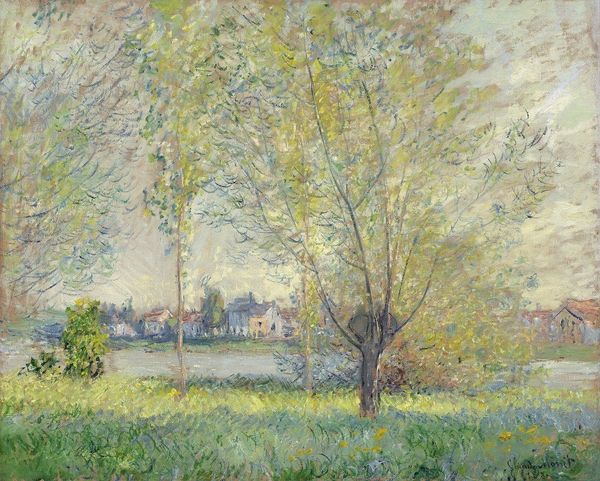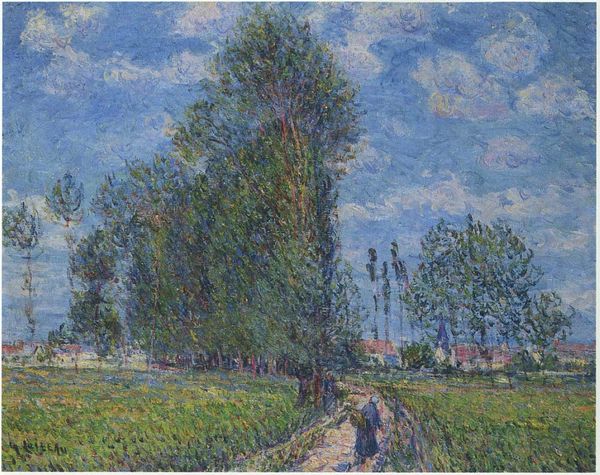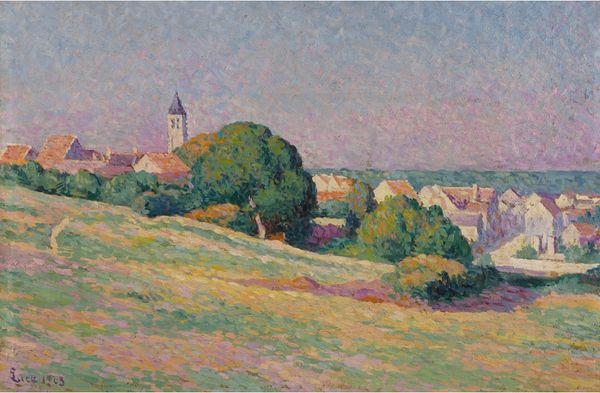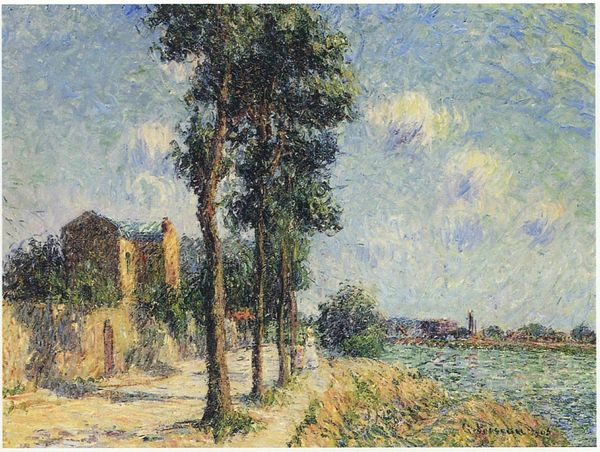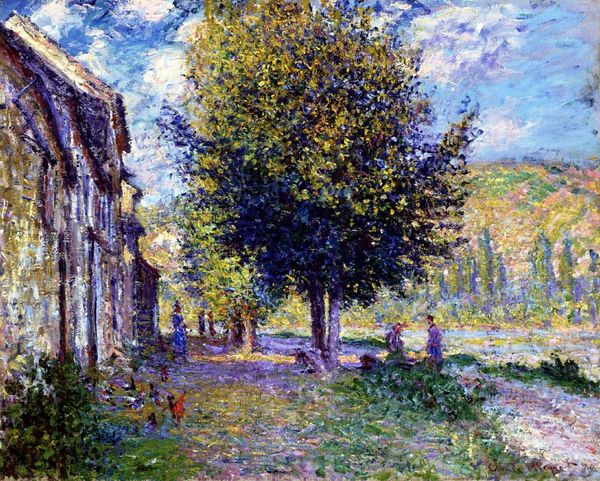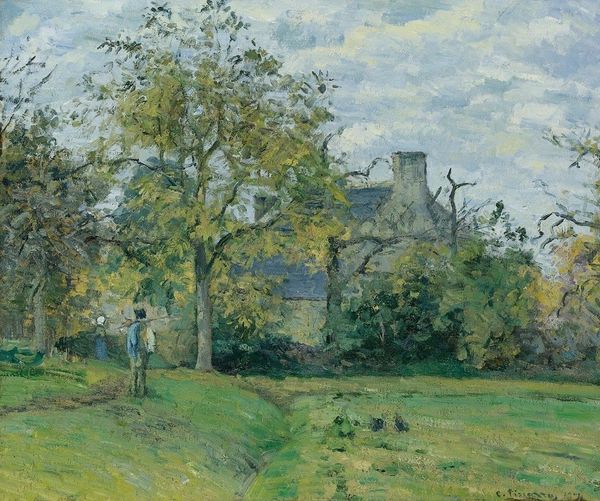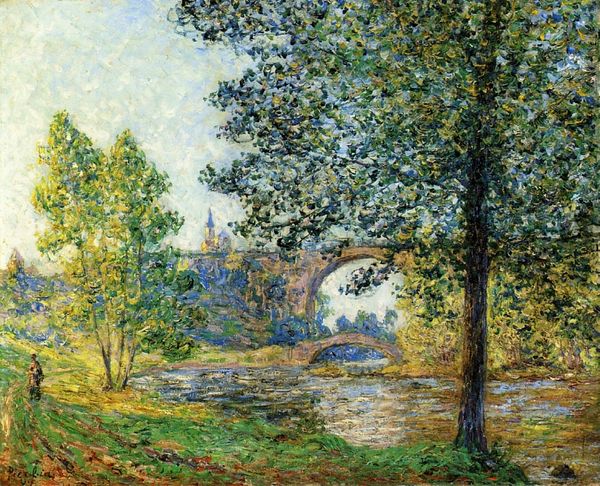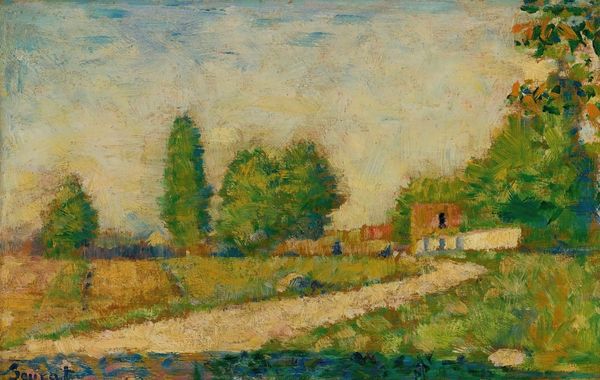
Copyright: Public domain
‘Paint generously and unhesitatingly, for it is best not to lose the first impression.’ – Camille Pissarro 🎨 Have you heard the term ‘en plein air’ before? This French phrase translates to ‘in the open air’, and refers to the act of painting outdoors. The Impressionist and Post-Impressionist painter Camille Pissarro (1830-1903) was an eager advocate of this technique, believing that it allowed the artist to capture the truth of the natural landscape. During his lifetime, however, Pissarro’s preference for painting en plein air proved controversial! 👀 Pissarro was the only artist who featured in all eight Impressionist exhibitions in Paris. Although originally trained in traditional oil painting at the French École des Beaux-Arts (equivalent to the Royal Academy in England), he gained recognition for his signature style of blocky, disjointed brushstrokes (‘pointillism’) and unconventional treatment of light. 🖌️ This oil painting from 1892, titled ‘Farm and Steeple at Sunset’, captures the aims of the French Impressionists. As was his signature, Pissarro painted the piece en plein air. this provided him with a direction connection to nature, as he could observe the changing light conditions in real time. His decision to paint a rural landscape suggests a sense of escape from the industrial metropolis of late 19th century Paris; here, the French countryside is idealised and depicted as a perfect image of serenity. 🌾 Pissarro often finished his paintings in one sitting. This method was at odds with the accepted traditions of studio painting. The celebrated French landscape painter Jean-Baptise-Camille Corot (1796-1875) was especially critical of this entirely en plein air technique, arguing that Pissarro’s works appeared unfinished and undeveloped. Corot himself sketched from reality, but would complete his paintings indoors over several weeks. 🖼️ How does Pissarro’s en plein air technique inform ‘Farm and Steeple at Sunset’? This painting displays a focus on the changing effects of light. The setting sun leaves a warm glow which creates a peaceful atmosphere. Take a look at the soft shadows cast by the abundant fruit trees in the field. You can almost imagine sitting in this patch of shade, watching the sun gently fade. 🌞 Alongside these representations of pastoral perfection, Pissarro has included references to human life. Several farm buildings can be observed in the distance, suggesting a harmony between the manmade and the natural. A church spire stretches over the landscape, standing proudly as a symbol of community and gathering for the small village. A small group of farm workers can be seen beneath the dappled trees; they appear to be peacefully engaged in their everyday tasks. Here, Pissarro has romanticised the lives of the French peasantry. 🧑🌾 Have you ever tried painting outdoors? Do you think it would be beneficial, or difficult? 👇💭 Editor: Lucy Jude Grantham
Comments
No comments
Be the first to comment and join the conversation on the ultimate creative platform.
